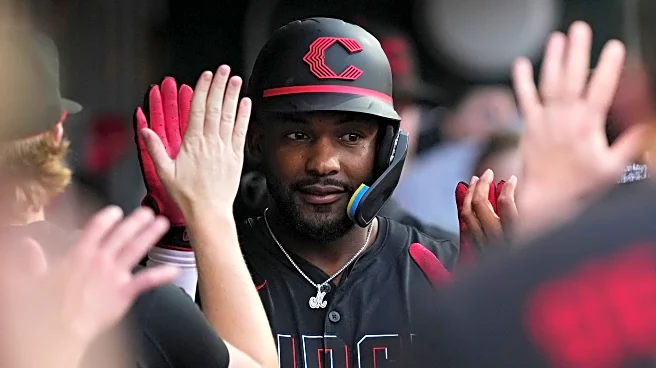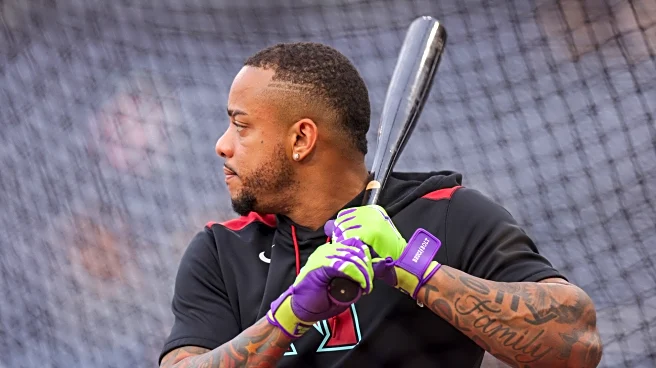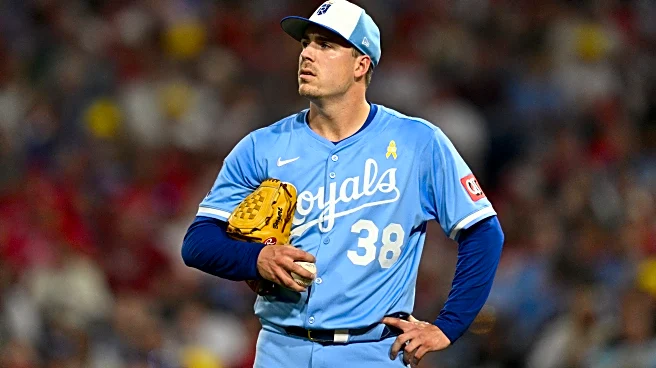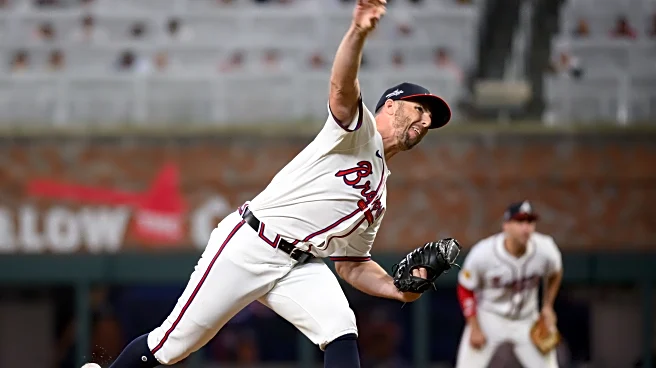2025 was anything but what Tanner Bibee wanted it to be…until it was. Back in March, Bibee and the Guardians reached a back-loaded extension worth $48 million that would lock Bibee up through the 2029
season. It felt as if the ace of the future had the money he was worth.
Then the season began.
Food poisoning from bad Chipotle scratched Bibee from the Opening Day start. It’s hard to come across a worse omen. Bibee’s delayed first start came against the Royals where he tossed 5.2 innings of scoreless ball, but it was immediately evident that something was off just a tick, and it all came unraveling in his second start against the Angels. A three spot in the first inning off of two home runs was not a great start, but he went scoreless over the following three frames. Then the fifth rolled around. Single, home run, single, home run. Before he knew it, there were four more runs on the board. Something was wrong, and the answer was pretty simple: Tanner Bibee lost his fastball.
Bibee went through some mechanical tweaks to aid his overall motion to the plate during the offseason, and it ended up being to the detriment of his fastball. Bibee’s 4-seam lost its vertical ride in favor for a touch more horizontal run. It was clear he wasn’t quite comfortable throwing it, and Bibee had to find a way to find the zone, so he turned to a sinker he had tinkered with a season ago, but rarely ever threw. Over the course of the first month of the season, Bibee’s sinker usage spiked from 10 total sinkers in 2024 to a 15.5% usage rate through his first five starts. He would have outings where the sinker clicked and he was able to get the sinker on the inner and outer thirds consistently (NYY 4/22, @DET 5/22), but when the sinker floated over the middle, it all went bad across the board.
It all came back to the fastball. Through his first four starts, his zone rate on his 4-seamer was down from 53.5% in 2024 to a staggering 39.6%. He couldn’t throw strikes, routinely found himself behind in counts, and his secondaries (cutter, changeup) got pounded because of it. The strikeouts vanished, the walks skyrocketed. No starting pitcher had a higher walk rate than Bibee through April. Something had to change, and it simply was just throwing strikes. Bibee’s strike rate on his 4-seamer saw a near 20% increase over his next seven starts (58.9%) while its usage dipped below 30%, a dramatic change from a 43% usage rate in 2024, and while it still got hit hard, it helped alleviate the pressure off of his secondaries. His bread and butter changeup and newly found, very good sweeper no longer had to work as both strike pitches in the zone to compensate for his poor fastball and as out pitches, and Bibee simply just went back to being able to use them to get whiffs.
Bibee put together a very solid stretch from the end of April through June. The walks plummeted from over 12% to just 4.9%. Bibee ran a 3.38 ERA and 1.098 WHIP from 4/18 through 6/26 and was dominating with his sweeper and changeup. He was avoiding barrels with his secondaries, generating whiffs, but a new prevailing issue was popping up, and it created struggles within run prevention that would plague his season and nearly crater it altogether.
We’ve all watched a football team dominate on both sides, moving the ball at will, but then you look up, and they’re only up three points, unable to slam the door on a team they’ve shown they’re superior to for three quarters. Once July started, that was Tanner Bibee, and it got ugly very quickly.
Despite Bibee succeeding the prior two months off the back of some fine tuning, he was still struggling to put batters away. The average MLB pitcher found themselves throwing a pitch in advantageous 2-strike counts (0-2, 1-2, 2-2) 24.9% of the time. Tanner Bibee from the start of July through the end of August found himself throwing pitches in those counts 25.6% of the time. Batters hit just .164 with a .184 xwOBA against the league average pitcher in those counts with a 46.9% strikeout rate and 25.5% whiff rate. Against Bibee over the course of July and August, batters hit .258 and posted a .267 xwOBA with a 37.8% K-rate and just 18.9% whiff rate. Bibee was not throwing competitive 2-strike pitches, and the more he worked pitcher’s counts only to watch them end in walks, the wear and tear it had on his confidence became more and more evident.
Coupled with this was continued poor defense behind Bibee. Errors led to four unearned runs and seven baserunners reaching on errors over this two month span, and it all culminated in a dugout blow-up after Bibee’s outing at home against Tampa Bay on August 25. Between the suspensions of Ortiz and Clase that blew up the pitching staff to the 10-game losing streak, naturally, the roller coaster season extended to the team’s top players, but Bibee being the professional he is, took a talk with Stephen Vogt to heart. It’s important to remember: as emotional as Bibee is as a pitcher, that pendulum swings both ways, and when you’re the teammate Bibee is, everything is understood to be rooted in good faith and a desire for the wellbeing of the team, and this dugout blowup was followed by the most inspired baseball this team has played in years.
Bibee’s September was tremendous. A full course correction happened, and it was seemingly almost overnight. The 4-seam was no longer the primary, it became his cutter. Bibee became more of a power pitcher to righties, throwing a combination of his cutter, 4-seam, and sinker a combined 90.8% of the time with his cutter being a multifaceted offering.
A quick shoutout to longtime friend of the site, Matt Dallas, and his never-ending quest for the cutter to be less attributed as a fastball and more as a breaking offering. We picked up a monumental win with Bibee’s close to the season. Bibee’s cutter appeared to work similar to a power gyro slider, and he used it as such both situationally and in location. It became his bread and butter in 2-strike counts to right-handed hitters. Up until September, Bibee had thrown his cutter just 16.5% of the time in 2-strike counts to RHH, generating a 30.8% whiff rate. In September, that rate ballooned up to 47.1% usage paired with a 33.3% whiff rate.
The simple idea of “throw your best pitch” is so easy yet so difficult at the same time. Figuring out the where and when to throw a pitch is just as difficult as understanding it’s in the arsenal altogether. Pictured below is Baseball Savant’s ‘attack zone’. It’s very useful in breaking down where a pitcher attacks a hitter due to its expansive zone selections. For instance, a broad ideal attack zone grouping for a right-handed pitcher’s slider against a right-handed hitter would be zones 9, 16, 18, 19, and 29.

Prior to September, just 41.9% of Bibee’s cutters found these zones, but the results were tremendous. He allowed a mere .222 batting average and ran a 50% whiff rate. Bibee knew he had this in the bag, but he never turned to it. In 2-strike counts, he found those zones with his cutter just 7.7% of the time, opting more for his sweeper. In September, Bibee threw his cutters in those zones 52.9% of the time, allowing an opponent average of just .200, and while the whiff rate came down to 23.1%, opponents averaged a mere 76.1 mph average exit velocity and didn’t register a single hard hit or barrel. In 2-strike counts, Bibee attacked those zones with his cutter 23.5% of the time and never allowed a hit.
Against left-handed hitters, Bibee was cutter/4-seam/changeup at a near even split. Prior to September, he was 4-seam heavy (34.8%) with his changeup as the equalizer (24.9%). Bibee would throw his sweeper and cutter around 13% of the time each. In September , his cutter usage to lefties spiked from 13.1% to 26.7%, and his sweeper went from 13.9% down to 6.3%. With an adjustment to his arsenal, Bibee mowed down left-handed hitters. They hit just .161 against him with a .235 xwOBA. Prior to that, lefties were putting up a .250 average with a .316 xwOBA and a near 40% hard hit rate.
Bibee didn’t just put together a solid month of September along the likes of his solid two month stretch earlier in the season. He accepted that just because the fastball got him to the dance, he can always look to find a new partner. Over the course of the last month of the season, he unlocked what will make him successful at a sustained, long-term level. Bibee, despite his struggles, found himself tossing a career-high 182.1 innings that included two complete games, one being a shutout. He is the strongest bounce back candidate in the Guardians clubhouse for 2026, and I even anticipate a world where he continues to open up his arsenal and bring back his sweeper (it’s really good) and gets those back-end Cy Young votes many anticipated he’d get this season.












